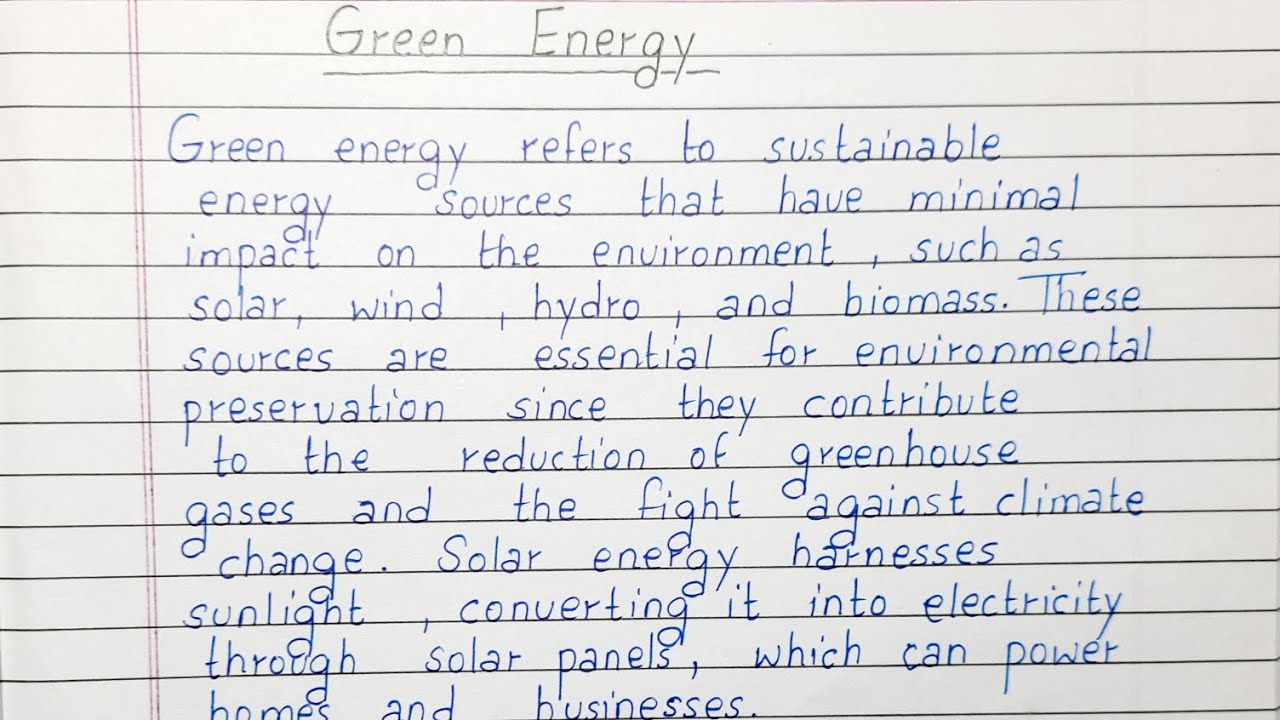
Introduction to Sustainable Innovation
The world is at a critical juncture where the need for sustainable solutions has never been more urgent. As climate change accelerates and natural resources dwindle, it is essential to explore innovative approaches that not only address environmental concerns but also promote economic growth and social equity. This article delves into various green technologies, sustainable practices, and innovative solutions that pave the way for a sustainable future.
The Importance of Green Energy
Green energy refers to energy that is generated from renewable resources. These resources are naturally replenished and have a minimal impact on the environment. Some key forms of green energy include:
- Solar Energy
- Wind Energy
- Hydropower
- Geothermal Energy
- Biomass Energy
Each of these energy sources plays a vital role in reducing our reliance on fossil fuels, thus mitigating the effects of climate change. Transitioning to green energy is not just a choice but a necessity for achieving long-term sustainability.
Innovative Technologies in Renewable Energy
Technological advancements have significantly improved the efficiency and accessibility of renewable energy sources. Here are some of the most notable innovations:
Solar Energy Innovations
Solar energy has seen remarkable advancements, making it one of the most widely adopted forms of renewable energy. Some innovative technologies in solar energy include:
- Solar Photovoltaics (PV): New materials and designs are enhancing the efficiency of solar panels, enabling them to convert more sunlight into electricity.
- Concentrated Solar Power (CSP): This technology uses mirrors or lenses to concentrate sunlight, generating heat that can be used to produce electricity.
- Building-Integrated Photovoltaics (BIPV): Integrating solar panels into building materials, such as windows and facades, allows for energy generation without compromising aesthetics.
Wind Energy Breakthroughs
Wind energy is another rapidly growing sector, with several innovative developments, including:
- Offshore Wind Farms: Harnessing wind energy from offshore locations has the potential to generate vast amounts of electricity with minimal land use.
- Vertical Axis Wind Turbines (VAWT): These turbines have a unique design that allows them to capture wind from any direction, making them suitable for urban environments.
- Floating Wind Turbines: These are designed for deep-water locations, expanding the potential for wind energy generation.
Hydropower Innovations
Hydropower remains a significant source of renewable energy. Innovations in this field include:
- Small-Scale Hydropower: This approach minimizes environmental impact while providing energy to local communities.
- Pumped Storage Hydropower: This method stores energy by pumping water uphill to a reservoir, which can then be released to generate electricity when needed.
Challenges in Adopting Renewable Energy
Despite the advancements, several challenges hinder the widespread adoption of renewable energy solutions:
- Initial Costs: The upfront investment for renewable energy systems can be high, deterring individuals and businesses from making the switch.
- Intermittency: Renewable energy sources like solar and wind are not always available, necessitating efficient energy storage solutions.
- Infrastructure: Existing energy infrastructure may not be equipped to handle the integration of renewable energy sources.
Energy Storage Solutions
As the reliance on renewable energy increases, so does the need for effective energy storage solutions. These technologies are crucial for balancing supply and demand, especially for intermittent energy sources like solar and wind. Some innovative energy storage solutions include:
Batteries
Battery technology has advanced significantly, with developments in:
- Lithium-Ion Batteries: Widely used in electric vehicles and grid storage, these batteries offer high energy density and efficiency.
- Solid-State Batteries: These promise greater safety and energy density compared to traditional lithium-ion batteries.
Pumped Hydro Storage
This method remains one of the most efficient forms of energy storage, utilizing gravitational potential energy to store and release energy as needed.
Compressed Air Energy Storage (CAES)
CAES systems store energy by compressing air in underground caverns, which can then be released to generate electricity.
Transportation Innovations for Sustainability
The transportation sector is a significant contributor to greenhouse gas emissions. Innovative solutions are emerging to reduce this impact:
Electric Vehicles (EVs)
Electric vehicles are leading the charge toward sustainable transportation. Key innovations include:
- Advanced Battery Technology: Improvements in battery efficiency and charging speed are making EVs more practical.
- Vehicle-to-Grid (V2G) Technology: This allows EVs to supply energy back to the grid, helping to balance energy demand.
Public Transportation
Investing in efficient public transportation systems can significantly reduce carbon emissions. Innovations include:
- Electric Buses: These are becoming increasingly common in urban areas, providing a cleaner alternative to diesel-powered buses.
- Smart Transit Systems: Utilizing technology to optimize routes and schedules can enhance the efficiency of public transport.
Building a Circular Economy
Transitioning to a circular economy is essential for sustainable development. This model focuses on minimizing waste and making the most of resources. Key principles include:
Design for Longevity
Products should be designed to last longer, reducing the need for frequent replacements and minimizing waste.
Recycling and Reusing Materials
Encouraging recycling and the reuse of materials can significantly reduce resource consumption and waste generation.
Promoting Sustainable Practices
Businesses and consumers alike must adopt sustainable practices, such as:
- Reducing Single-Use Plastics
- Supporting Local Economies
- Choosing Sustainable Products
Conclusion: A Sustainable Future is Possible
The path to a sustainable future is filled with challenges, but it is also rich with opportunities. By embracing innovative solutions, we can transition to a greener economy that prioritizes environmental health, economic resilience, and social equity. The adoption of renewable energy technologies, effective energy storage solutions, sustainable transportation options, and the principles of a circular economy are all critical components of this transformation.
In conclusion, the journey toward sustainability requires collective action from individuals, businesses, and governments. By working together, we can create a world that not only meets the needs of the present but also safeguards the future for generations to come. Let us be the change-makers who pave the way for a sustainable future.

